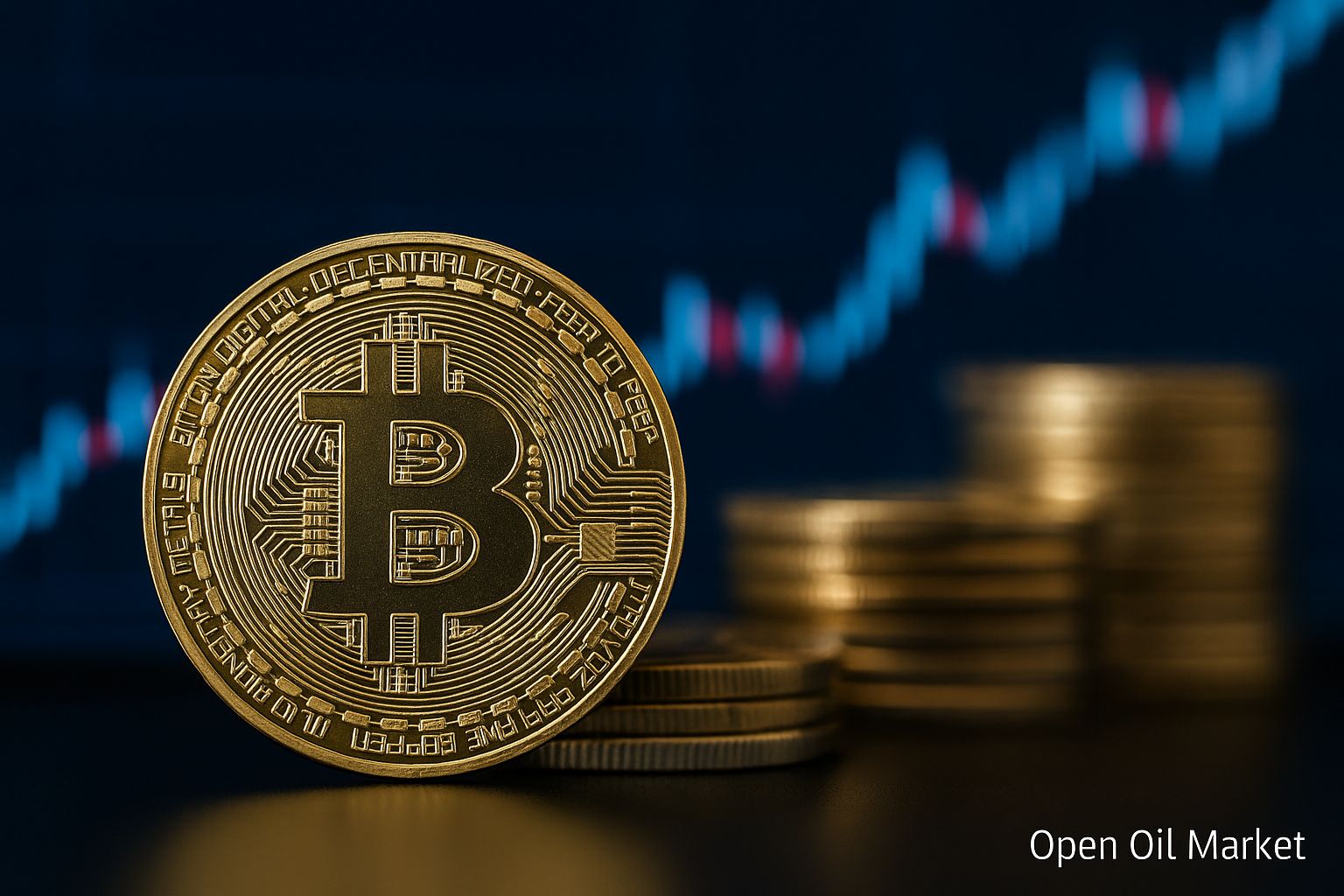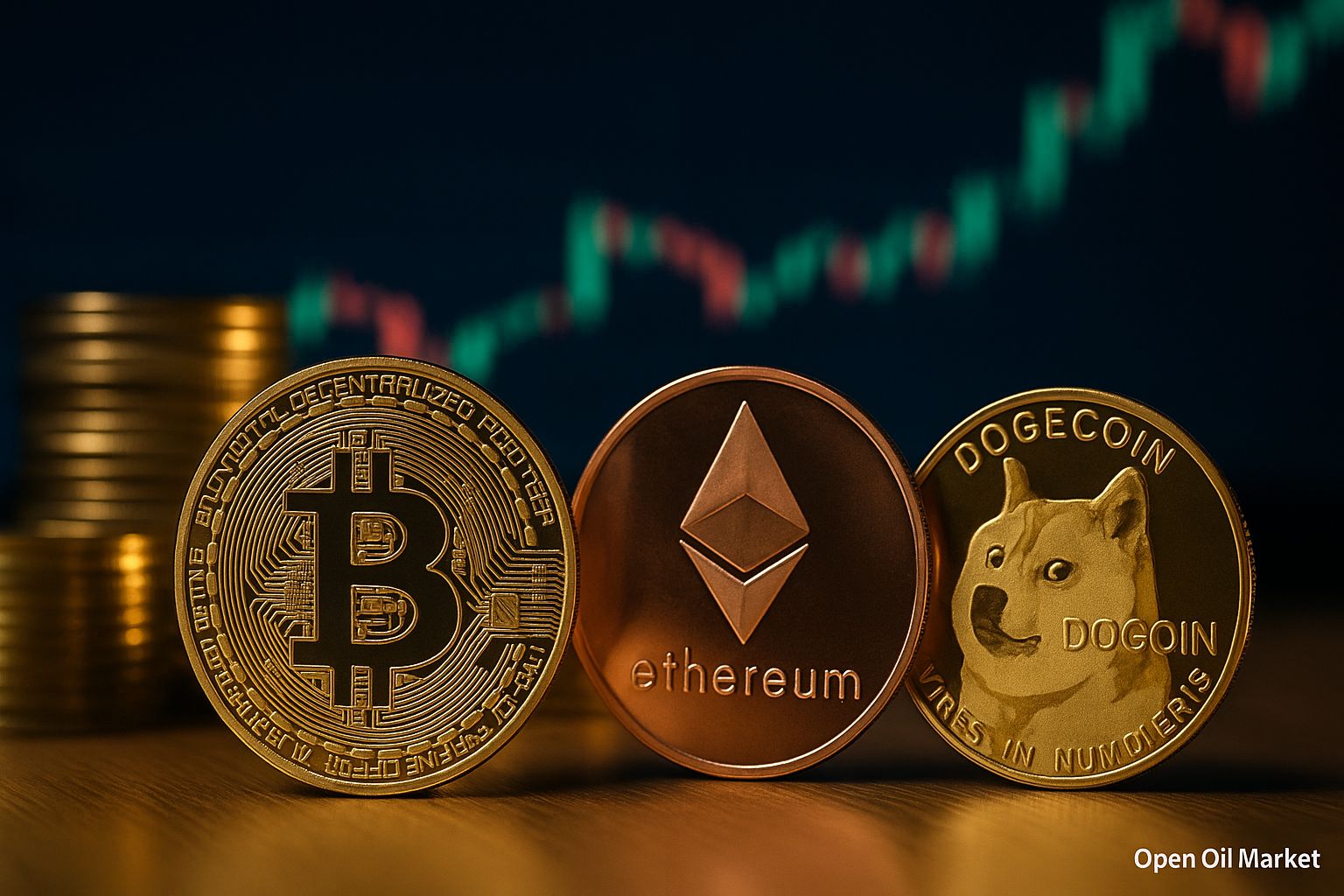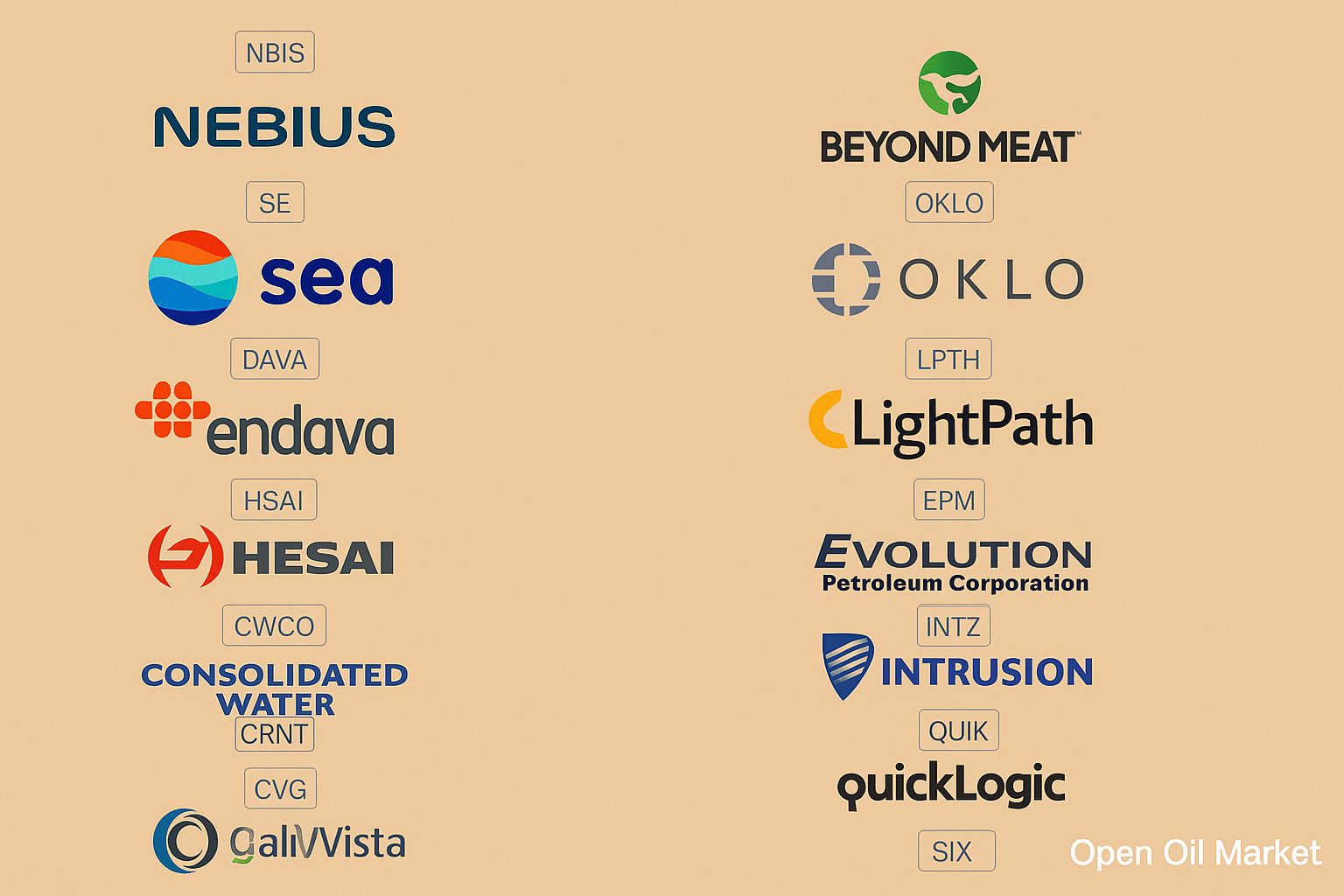
Current Cryptocurrency News for Tuesday, 4th November 2025: Bitcoin Attempts to Accelerate Growth Towards $115,000, Ethereum Remains Around $3,900, and Altcoins Continue to Rise on a Wave of Optimism. Regulatory Signals and Macroeconomic Events Are Impacting Cryptocurrency Market Volatility. An Overview of Key Events and Trends.
The cryptocurrency market at the beginning of November displays a moderately positive sentiment. Bitcoin, after a phase of consolidation, is attempting to resume its growth and approach recent highs, while many altcoins are trading positively alongside the market leader. The total market capitalisation of digital assets exceeds $3.7 trillion.
Investors are considering the external backdrop: signals from central banks and geopolitical news. Over the coming days, the focus will be on economic data from the United States and the Bank of England's decision – these events may briefly affect risk appetite. Simultaneously, institutional interest in digital assets remains high: the inflow of funds into crypto funds and the launch of new exchange products indicate the gradual maturation of the sector.
- Bitcoin: trading around $105,000–$107,000, aiming to surpass key resistance levels following recent consolidation.
- Ethereum: stable around $3,900; preparing for a major network upgrade in December, which supports investor confidence.
- Altcoins: Binance Coin (BNB) holds above $1,080, Solana (SOL) around $190, Cardano (ADA) ~ $0.63 — all showing positive dynamics in recent days.
- Memecoins: Dogecoin remains above $0.20 after a price spike, while Shiba Inu (SHIB) consolidates around $0.000011 without a pronounced trend.
- Institutional Investors: crypto funds continue to attract capital; the anticipated launch of the first ETF on XRP in mid-November heightens interest among major players.
- Regulation: China maintains stringent restrictions, while the US and EU discuss new regulations for stablecoins and exchanges; legislation on digital assets is nearing completion in Russia.
Bitcoin Tests Key Levels
The largest cryptocurrency, Bitcoin (BTC), continues to trade near the $107,000 mark, demonstrating resilience following an October correction. In recent days, BTC has consolidated and is now attempting to breach the resistance zone around $115,000–$117,000. Many analysts note that a confident breakout of this range could pave the way for a new historical maximum (above $126,000) in the coming weeks, supported by the traditionally strong seasonality of November. However, the $108,000–$110,000 range remains a critical support zone - maintaining above it is crucial for sustaining the upward trend, while a breakdown could trigger a correction to below $100,000. Institutional demand continues to support BTC: in October, Bitcoin ETFs attracted billions of dollars, and several large companies announced additional purchases. These factors reinforce BTC's status as a strategic asset, even amidst ongoing economic uncertainty.
Ethereum and Network Activity
Ethereum (ETH) is holding around the $3,900 mark, slightly retreating from recent local highs above $4,000. Meanwhile, the Ethereum ecosystem is witnessing record activity: the number of daily transactions and active addresses is reaching new peaks due to increased demand for DeFi services and NFTs. Layer two solutions (Arbitrum, Optimism, Base) further enhance throughput and reduce fees, attracting new users and developers.
Investors are eagerly awaiting the scheduled large-scale network upgrade titled "Fusaka" on 3rd December 2025. This upgrade is intended to enhance the privacy, security, and efficiency of Ethereum transactions, which is creating positive expectations around ETH. Following a period of volatility, the Ether rate has stabilised, and several analysts anticipate further growth if the upgrade meets expectations.
Altcoins and Memecoins
Beyond Bitcoin and Ethereum, leading altcoins remain in the spotlight for investors. Binance Coin (BNB) is trading above $1,080 amid high activity in the Binance ecosystem and regular coin burns, which are reducing supply. Solana (SOL) is positioned at around $190, benefiting from the expansion of DeFi and NFT projects on its high-speed blockchain (despite occasional technical failures adding to volatility). Cardano (ADA) is holding around $0.63; the launch of new projects based on Cardano is anticipated, which is fueling interest among long-term investors. XRP remains above $2.5 - the rate appears stable ahead of the expected mid-November listing of the first spot ETF on this token, while Ripple's partnerships with banks continue to bolster trust in XRP.
Institutional Trends
Against the backdrop of price fluctuations and technological innovations, institutional investors continue to engage actively with cryptocurrencies. At the end of October, the first crypto-ETFs based on Solana, Litecoin, and Hedera were launched in the US - attracting tens of millions of dollars in the initial days, although the prices for these tokens subsequently dipped by 3–6% (likely due to profit-taking after the initial hype). Nonetheless, the emergence of such products broadens the opportunity for traditional investors to expand their portfolios beyond BTC and ETH to include major altcoins.
Concurrently, there is growing interest in a new instrument - the spot ETF on XRP, debuting in mid-November. Its introduction is attracting the attention of funds and banks looking to gain exposure to the crypto market beyond Bitcoin and Ethereum. Some analysts note that medium-term forecasts for the market overall remain optimistic: a positive news backdrop and capital inflow suggest further growth in the sector by the end of the year.
Regulation and Global Events
In May 2025, China once again tightened its ban on crypto operations and mining, leading to a temporary market pullback of more than 10% - an example of investment risks within strict controls. In the West, new rules for stablecoins and cryptocurrency exchanges are being discussed in the interest of financial stability protection. The EU is implementing a unified cryptocurrency regulation (MiCA), while Russia is finalising a bill to legalise stablecoins and mining. These initiatives confirm that cryptocurrency has firmly entered the economic agenda.
On the macroeconomic front, central bank decisions and global events remain in the spotlight for crypto investors. The RBA's (Australia) decision to keep rates unchanged has supported sentiment in global markets. Market participants are also attentively following employment data in the US and the outcomes of the Bank of England's meeting on 6th November – these events could influence risk appetite, causing short-term price fluctuations in cryptocurrencies. It is crucial for investors to respond promptly to news from different regions, as policy changes or economic surprises can rapidly alter market trends.
Top 10 Most Popular Cryptocurrencies
- Bitcoin (BTC) — the first and most expensive cryptocurrency, scarce due to limited issuance (21 million coins), acting as "digital gold". Currently, BTC is trading around $112,000 and accounts for approximately 40% of market capitalisation.
- Ethereum (ETH) — the second largest cryptocurrency by capitalisation and leading smart contract platform. ETH (~$3,950) is widely used in DeFi and NFTs. The transition to Proof-of-Stake has improved the network's energy efficiency, while further upgrades enhance its scalability.
- Tether (USDT) — the largest stablecoin, pegged to the US dollar. It provides high liquidity on exchanges and is widely used for settlements and hedging; a key element of the cryptocurrency market infrastructure.
- USD Coin (USDC) — the second largest dollar stablecoin from Circle. Fully backed by fiat reserves and features high transparency, making it popular among both institutional investors and in the DeFi sector.
- Binance Coin (BNB) — the utility token of the Binance exchange and BNB Chain. It is used for commission payments (at a discount) and participation in the platform's services. The development of the ecosystem and regular coin burns support the price of BNB (~$1,100).
- Ripple (XRP) — the token of the Ripple payment platform, designed for fast cross-border bank transfers, trading around $2.6. Ripple's legal victories over the SEC and new banking partnerships improve XRP's prospects; the anticipated launch of the first ETF could attract additional demand.
- Solana (SOL) — blockchain platform for DeFi and NFTs, SOL (~$190) is characterised by low fees and high speed, although network disruptions can sometimes create volatility.
- Cardano (ADA) — a third-generation platform built on a scientific basis using the Proof-of-Stake algorithm. ADA (~$0.63) is known for its focus on reliability; the development of smart contracts and the ecosystem maintains long-term interest among investors.
- Dogecoin (DOGE) — a memecoin that gained popularity due to community support (and mentions by Elon Musk). DOGE (~$0.21) is used for internet tipping but remains a highly volatile asset.
- Tron (TRX) — a blockchain platform aimed at the entertainment sector. TRX (~$0.31) supports numerous dApps and stablecoin issuance (like USDT), solidifying Tron’s position in the digital entertainment industry.
Outlook and Summation
The conclusions of the current week largely depend on the interplay between macroeconomic factors and the internal dynamics of the cryptocurrency market. Most analysts maintain a cautiously optimistic outlook: historically, November tends to be a successful month for digital assets, and following a recent correction, investors are anticipating further market recovery. However, the level of uncertainty remains elevated — both due to external economic signals and potential regulatory changes.
- Further growth of Bitcoin and Ethereum is possible if institutional demand and positive news (new ETFs, successful network upgrades) outweigh the impact of macroeconomic risks.
- The active development of DeFi and NFT segments, alongside the emergence of new blockchain projects, can sustain interest in altcoins and drive their prices upwards.
- Strict regulatory actions (especially in the US, Europe, and China) retain a factor of uncertainty. Investors should closely monitor decisions by authorities and regulatory bodies that could impact the market.
- Investors are advised to diversify their portfolios and balance risks. It is vital to consider both fundamental and technical factors when assessing the market situation.




